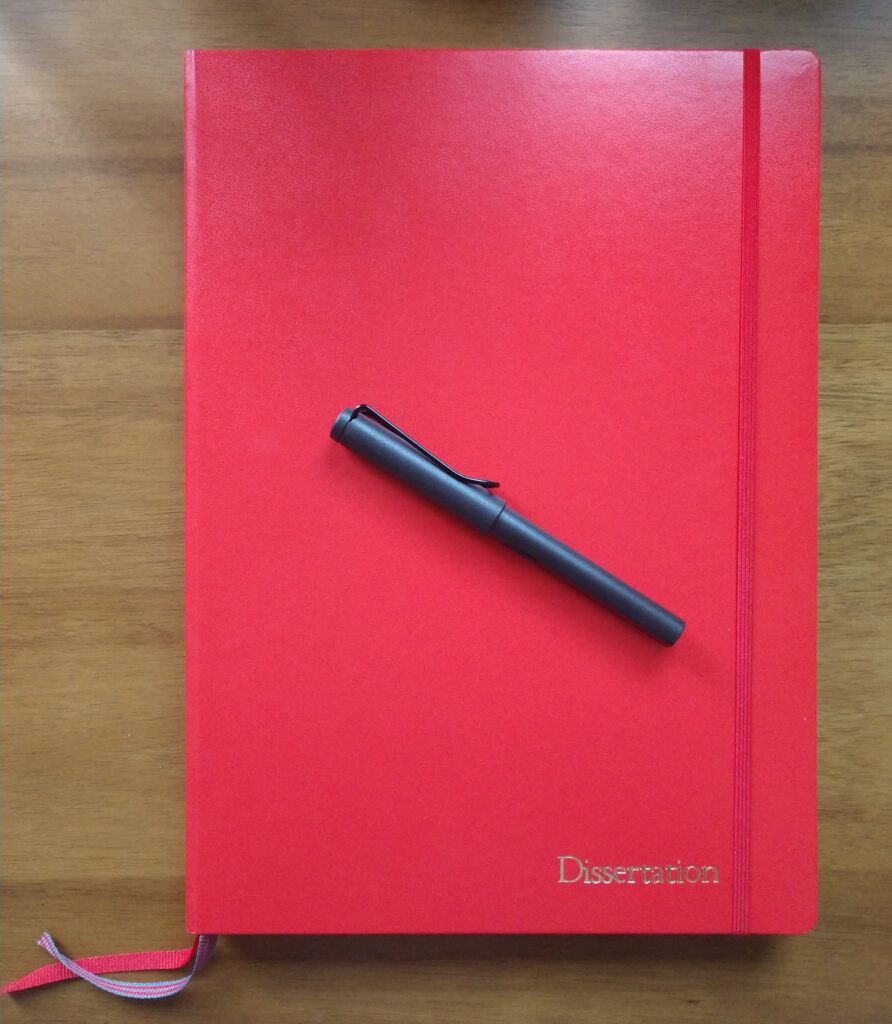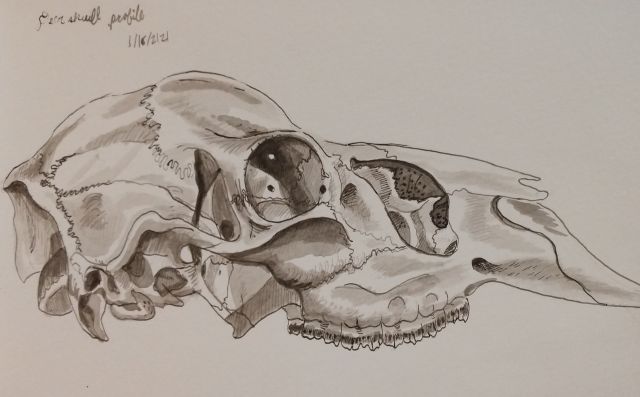The last few months have been rather busy for me regarding the dissertation, but the work has changed slightly as I’ve settled into the new year. If January was all about sorting through potential subtopics and archival repositories, February and early March have been about distilling those various resources into a coherent prospectus draft.

Since I knew synthesizing all my recent thinking would be a potentially daunting task, I wanted to document this latest burst of work as thoroughly as possible for future reference. In addition to my regular journaling then, I started a new routine of daily writing related to my current research. Each morning before I started working on my self-assigned topic or archival repository for the day, I wrote for an hour about what I had done the previous day. I’d talk about any findings I’d made, what I thought about them, how they related to my broader interests, and what kinds of questions they raised. By the time I sat down to work on the prospectus outline, I had about three weeks’ of written logs describing the trajectory of my thinking.
The first thing I did for the outline then, was to read through each of these logs and write down any recurring observations. Right away, I noticed that my thinking had centered around traveling exhibitions, and I knew this would be the main subject for the dissertation. From there, it was a matter of organizing all my other thoughts, topics, and inquiries around this main subject.
I’ve talked about my writing process here before, and I used a similar format for creating the prospectus draft. The main difference was that I shared my outline with my advisor before I started writing, and I did an additional week of research into a few more topics he had suggested. This ultimately helped me streamline the prospectus further by re-shifting it to include a chapter on the early history of traveling exhibitions, and to drop two other chapters on 21st-century iterations.

I spent about two weeks writing and editing the draft, with the piece started out around 23 pages, expanding to more than 30, and shrinking back down to 22 as I refined my ideas. Of the various sections, writing the literature review was particularly challenging because it’s so easy to turn it into a kitchen-sink list of books, as you don’t want to leave anything out. As I started defining my own methodological interventions more clearly, however, it became easier to trim down the list and actually create a concise argument rather than a rambling list of titles.
At the present time, I’m gearing up to revise my draft, as my advisor has now read and commented on it. Although I have further revisions to make, the first draft was overall a solid effort. I credit a lot of that to my writing process (and the inauguration; the election disputes and the Capitol riots were hell on my concentration). I’ve heard that writing is thinking, and I agree with that axiom. With each draft, I clarified for myself as well as the reader what I wanted to say, and what kind of interventions I hope to make.

The last couple of months have also been a valuable process for me in terms of refining my working habits and articulating my research interests. I’ve always known that I focus best in the early morning, but my workplace schedule or class schedule dictated my productivity when I was curating full-time or completing coursework. Now that I’m finished with classes and can set my own schedule, I’ve embraced my early-bird tendencies. On a typical weekday then, I start dissertation work at 6 am and finish by 10, leaving plenty of time in the late morning and early afternoon for Equality Lab work, exhibition research with the Barry Art Museum, and anything else I need to do before finishing work for the day at mid-afternoon. I get a lot more done when I follow this schedule while still having plenty of time for hobbies, exercise, quality time with Brandon, and sleep.
Writing the prospectus draft has also helped me better define my own research interests, which had been a somewhat daunting task. I’ve always been something of a Proteus when it comes to my research. I can get interested in almost any topic, but my work has always been defined by the expectations of a class or exhibition. If you had asked me what my core interests were though, I’d have trouble answering. The prospectus has forced me to do exactly that though, and it’s a relief to know that I do have research interests extending beyond the parameters of coursework, exhibition schedules, or archival availability.
Admittedly, I’m not surprised that I ended up focusing on traveling exhibitions, as it was the transit infrastructures of the Community Art Center Project that got me thinking about pursuing a Ph.D. in the first place. During the last several months, however, I’ve gotten a much better sense of how my interests extend beyond the Community Art Center Project itself. Through this process, I’ve realized it’s not just transit infrastructures, but how people access art that interests me, whether it’s through traveling shows, seeing art in an airport, learning how to paint through watching television programs like Bob Ross or taking classes at painting paties, or other ways. The mobility of art as rendered through travel infrastructures certainly plays a big part in these questions, but so do classes, art stores, museums, and the spaces where art gets shown.

In short, for the first time since I first started looking into the Community Art Center Project, I have really begun to see how my research is not limited to it. On the contrary, I could spend a whole career writing about the question of art access, with each book focusing on a different topic. Admittedly, the likelihood of actually finding a job where I could do this is essentially zilch, but it is useful to my curatorial practice. More immediately, the process has expanded my inquiries so far beyond the Roswell Museum that I can now comfortably envision a dissertation that still addresses the museum and its WPA history without it being the main focus. This was especially important for me personally because as significant as that place has been for my work, I have no interest in returning there, and didn’t want to pigeonhole myself as a scholar. Roswell may have prompted me to pursue doctoral studies at William & Mary, but I can now confidently say that my research interests are not limited to it.
And that alone has made the prospectus draft an invaluable experience.